Are you curious what a half-sibling match will look like on Ancestry DNA? Whether you are trying to determine how a match is related to you, or trying to figure out if your sibling match is a full or half-sibling, you'll find helpful answers here.
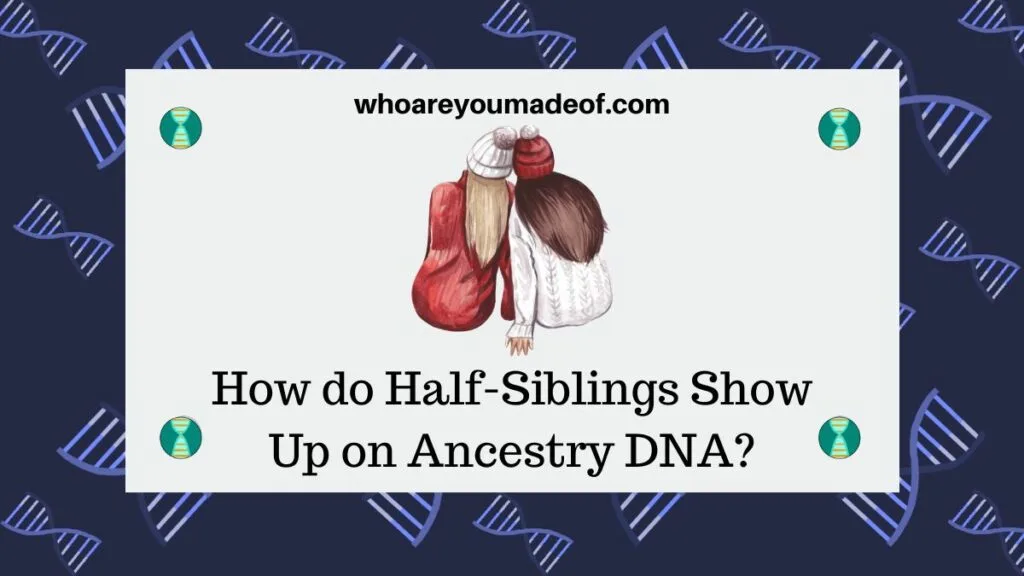
In this post, you'll learn:
- How half-siblings show up on Ancestry DNA
- How much DNA half-siblings share
- Whether the total number of DNA segments relates to if you are full or half-siblings
- If you can use your match's ethnicity estimate to determine how you are related
- About shared matches between siblings
How do half-siblings show up on Ancestry DNA?
When you first open your list of DNA matches, you will notice that your matches are organized in order of their relationship to you. For example, your parents would be listed first, then your immediate family, close family, and then first cousins (and so on, and so on).
Half-siblings, generally speaking, will show up in the "Close Family" category on Ancestry DNA. It is also possible for half-siblings to be placed in the "first cousin" category, since the categorization of our matches is based on the amount of shared DNA.
In the image below, you'll see the first DNA match that shows up for our test taker in the Close Family category. This match is a half-sister, and shows up in the Close Family category with a predicted relationship of half-sister or niece.

Please note that not everyone who shows up in the Close Family category is a half-sibling. There are a few different relationships that have the level of shared DNA that will cause a match to be assigned to this category.
How much DNA do you share with a half sibling?
Half-siblings will typically share between 1300-2300 centimorgans (cMs) of DNA. For comparison, note that full siblings will share between 2300-3300 cMs.
The range of centimorgans shared between half-siblings is important to note. Sharing DNA with your half-sibling match on the low end or high end of the range, is not generally significant, unless there is doubt about whether the sibling is a full or half-sibling.
There are two ways to find out the number of centimorgans that you share with your DNA matches. This is the best way to determine whether your DNA match shares enough DNA with you to possibly be a half-sibling.
First, you can view the number of cMs you share with your match directly from your DNA match list. The number of cMs is listed directly below the estimated relationship right on your list, as indicated with the red rectangle in the image below:

You can also see how much DNA you share with your match by clicking on their name and viewing the match profile. From the potential half-sibling's DNA match profile, we see the number of centimorgans shared by clicking on the person's name from your DNA match list and viewing details about shared DNA towards the top of the screen (as shown in the image below):

The person in the image above is not my half-sibling. I can be sure because she only shares 387 cMs with me, which is far too little for us to be half-siblings or even first cousins.
Half-cousins will always share at least approximately 1300 centimorgans of DNA. This is because half-siblings are close relatives.
Other relatives such as aunts, uncles and grandparents, and even full first cousins, can show up as close relatives. These relatives also share similar percentages or centimorgans of DNA with us, which means that we can't always assume that these matches are half-siblings.
Do half-siblings always show up in the Close Family category on Ancestry?
Ancestry assigns your DNA match to a category based on the amount of DNA that you and your match share, measured in centimorgans. This is called the "predicted relationship", and is rarely an exact description of your genealogical relationship to your match.
Instead, think of it like an estimated relationship.
The range of the number of cMs that two people will share is fairly predictable at relatively close relationships, and can also be expressed as degrees of separation.
This is one reason why we might sometimes see our half-siblings estimated to be a half-sibling or first cousin. It is up to us to examine all of the information that we have available to us in order to determine exactly how our relative is related to us.
Full-siblings are separated by two degrees of consanguinity (count one up to get to the parents, and one down to get to the other sibling = two). Half-siblings will share the same amount of DNA as people who fall into the "3 degrees of separation" category, which on Ancestry is the Close Family category.
Half-siblings can share an amount of DNA that falls within the same range as other close family relationships, including full-siblings, niece/nephew, grandchild, and first cousin. There is a range of shared DNA between full and half-siblings, and there is slight overlap at the top of the range for half-siblings and full siblings.
Is there a way to use DNA to be sure that my sibling is a full or half-sibling?
For example, if you share 2300 cMs with a match, can you be sure that you are full siblings? Can you be sure you are half-siblings? If you and your sibling match at this level, you can't be sure of a full or half-sibling relationship based only on the cMs amount.
A sibling match who matches at this level may be placed in the immediate family category as a high matching half-sibling. There are other ways to determine whether you are full or half-siblings, so don't despair (more on this later).
Can total number of DNA segments tell me whether my sibling is a half or full sibling?
The number of DNA segments shared between siblings doesn't matter at all. There is little correlation, if any, between the number of DNA segments shared and whether or not two people are full or half-siblings.
Let's take a look at the amount of DNA shared between two half-siblings again:

These two half-siblings share 1963 centimorgans of DNA across 84 DNA segments. 84 is a lot, right?
There are many more reliable ways to determine your exact relationship. (Read more about number of DNA segments and siblings).
Can my siblings ethnicity help me determine whether we are full or half-siblings?
You might wonder if your DNA match's ethnicity estimate can give you an idea as to whether they are a sibling match, and if they are, whether they are a full or half-sibling to you. While ethnicity estimates can offer clues to your relationship, they cannot be used to determine the exact nature of your connection.
For example, take the half-sibling match that we have been using as an example. In the two images below, you will be able to see the major ethnicities of these two half-siblings:
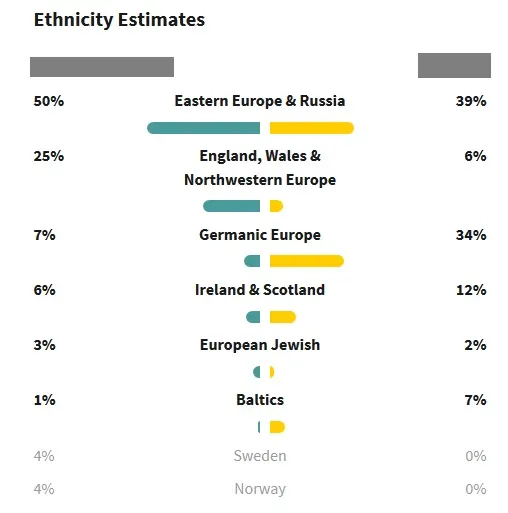
As you can see, the ethnicities of these two half-siblings are very similar. So similar, in fact, that if you were using the ethnicity estimate as your only guide, you might think that they are full siblings.
They share similar quantities of their major ethnicity regions (Eastern Europe and Russia and England, Wales & Northwestern Europe), and even share most of their trace regions.
These siblings share the same mother and have different fathers, but it is clear that both of their fathers have a similar ethnic background, which is why their ethnicity estimates look so similar.
In fact, these two siblings had no idea when they were growing up that they were half-siblings. They share a phenotype, which is why there was never any question about their relationship.
Fortunately, they did find out that they were half-siblings years before the advent of this type of DNA testing, so there was no surprise when they got their results back.
Shared matches can help you figure out a full or half-sibling relationship
If your sibling match shares an amount of DNA with you that falls within the overlap between the two ranges, you can use your Shared Matches to determine whether you are full or half-siblings. Full siblings will always share close relatives (like siblings, grandparents, aunts, uncles) in common, as well as first cousins and verified second cousins.
This means that if you have an aunt or uncle on one side of the family that your sibling doesn't match, there is a possibility that they are your half-sibling (again, if the shared DNA falls within the range).
Third cousins don't always share DNA, so you can't depend on sharing or not sharing a third cousin match to verify your relationship with your sibling or determine how you are related to your match.
You can also use the amount of shared DNA that you and your sibling share with other relatives as additional data points. There are expected ranges of shared DNA for other relationships, which can help us narrow things down a bit.
Read more about which DNA matches full siblings should share here:
Conclusion
I hope that this post has helped you understand how a half-sibling shows up on Ancestry.
I tried to answer some of the most common questions related to this topic, but if you have any more questions, have a comment, or would like to share your experience with your half-sibling match, I would love to hear from you in the discussion below.
Thanks for stopping by!
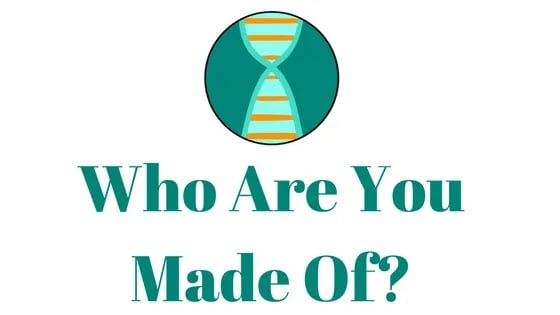
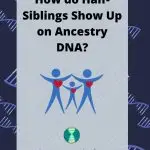
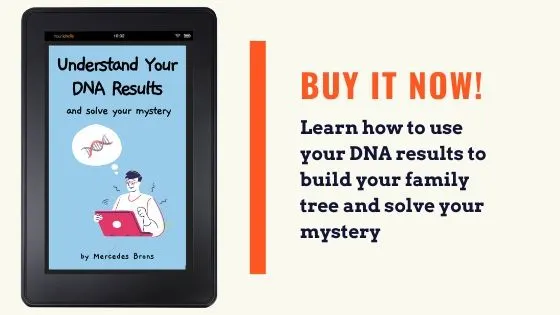
June Boren
Wednesday 21st of February 2024
I enjoyed reading all of this info . I am trying to figure out if a match @1777 cMs and 32 segments is a half sibling. This person has no name or info on their profile for me to get more info. He is on my paternal side.
Elizabeth
Friday 24th of March 2023
Hi Mercedes’
I have been looking for my Bio father forever on Ancestry I have 2 matches one is 1884 cm the other 1355 the matches are full sisters there neice I match 1053 cm , Would they be my 1st cousins or half siblings ? With ged match would they come up with the same X chromosome if they were cousins ?
Thank you for your help Eliza
Annie
Tuesday 14th of March 2023
My half sister and I (same father) are not matched at all on the Ancestry DNA test and she does not appear as a shared match with any of my shared matches on my father's side. Obviously I am doubtful that we are half sisters and suspect that we are just step sisters as I know that my father and her mother (both deceased) were married. Not wishing to cause any upset haven't discussed this with her as she obviously was either not keen or not interested. Either way it doesn't matter to me but I would like to know whether it is possible for half sisters with the same father to have no shared DNA - judging by everything I have read it seems highly unlikely if not impossible.
Christina
Thursday 1st of June 2023
@Annie, Definitely not possible! But as you probably already feel about your sister, DNA isn't what makes you a family :)
Dawn Saddler
Tuesday 13th of December 2022
We are going through DNA sibling testing with a half brother that has passed away only thing we have of him is clothes a few strands of hair from a hat and they are saying it's not showing enough pointers what else can we get to prove he's our half brother
Pippa
Thursday 27th of October 2022
My first cousin raised by my Aunty my fathers sister shared 1317 cms across 36 segments and is trying to claim that we a half siblings. The claim is that my father had incestual relationship with a niece with a different Aunt and she was the result of that relationship. I keep telling her my father was not even in the UK as he lived in Australia during the time she was conceived but she is convinced.